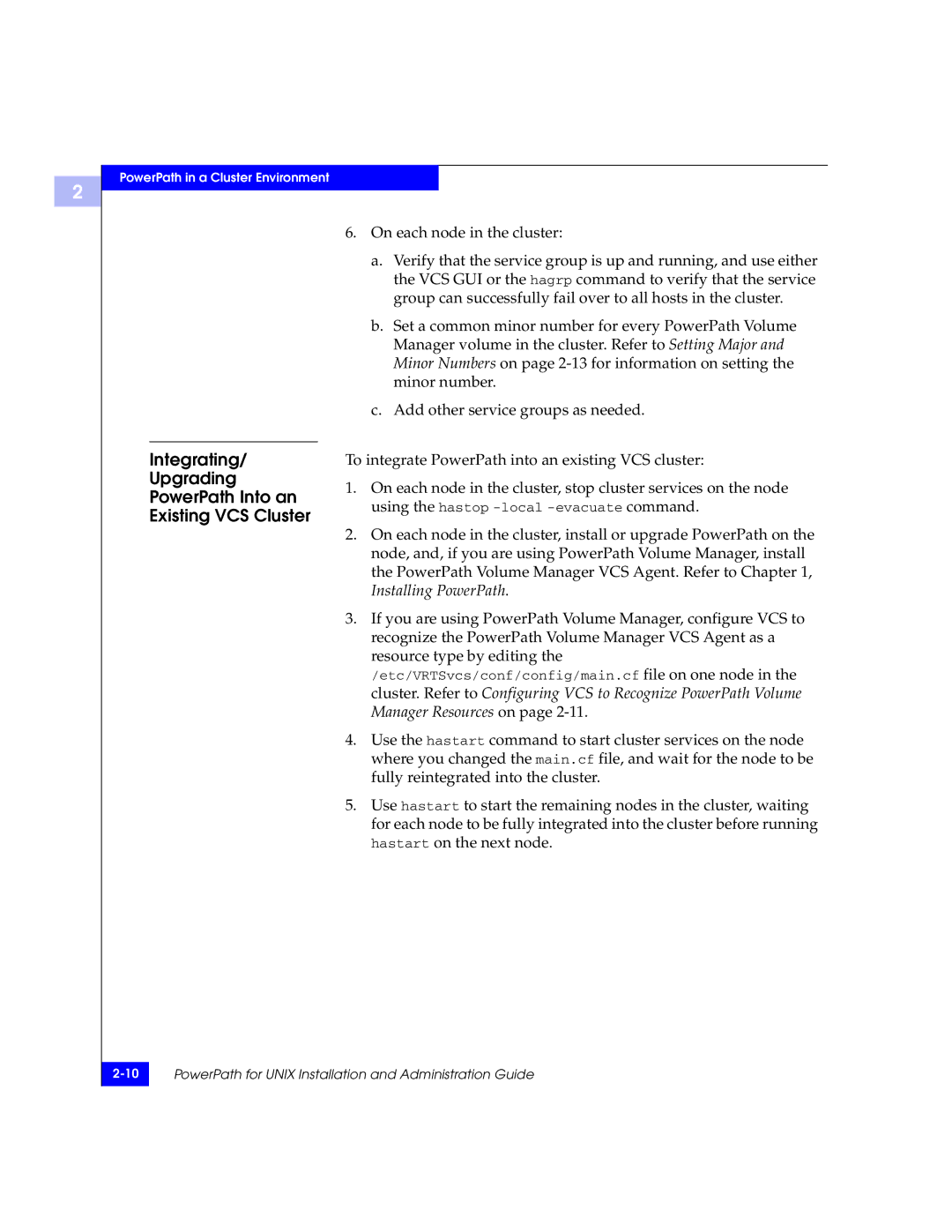
2
PowerPath in a Cluster Environment
Integrating/
Upgrading
PowerPath Into an
Existing VCS Cluster
6.On each node in the cluster:
a.Verify that the service group is up and running, and use either the VCS GUI or the hagrp command to verify that the service group can successfully fail over to all hosts in the cluster.
b.Set a common minor number for every PowerPath Volume Manager volume in the cluster. Refer to Setting Major and Minor Numbers on page
c.Add other service groups as needed.
To integrate PowerPath into an existing VCS cluster:
1.On each node in the cluster, stop cluster services on the node using the hastop
2.On each node in the cluster, install or upgrade PowerPath on the node, and, if you are using PowerPath Volume Manager, install the PowerPath Volume Manager VCS Agent. Refer to Chapter 1, Installing PowerPath.
3.If you are using PowerPath Volume Manager, configure VCS to recognize the PowerPath Volume Manager VCS Agent as a resource type by editing the
/etc/VRTSvcs/conf/config/main.cf file on one node in the cluster. Refer to Configuring VCS to Recognize PowerPath Volume Manager Resources on page
4.Use the hastart command to start cluster services on the node where you changed the main.cf file, and wait for the node to be fully reintegrated into the cluster.
5.Use hastart to start the remaining nodes in the cluster, waiting for each node to be fully integrated into the cluster before running hastart on the next node.
PowerPath for UNIX Installation and Administration Guide | |
|
|
